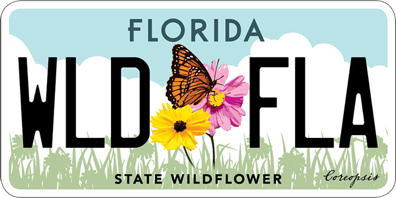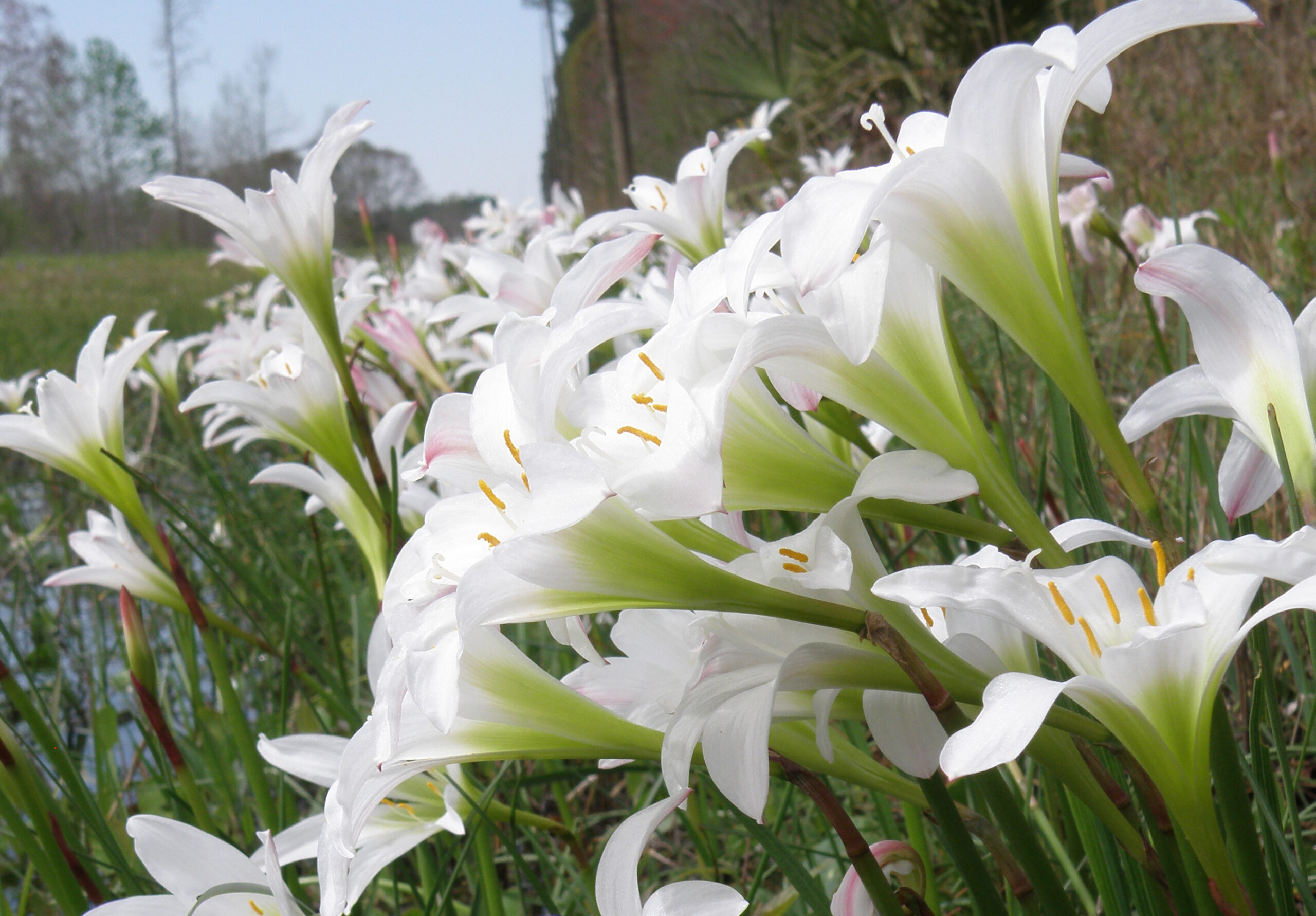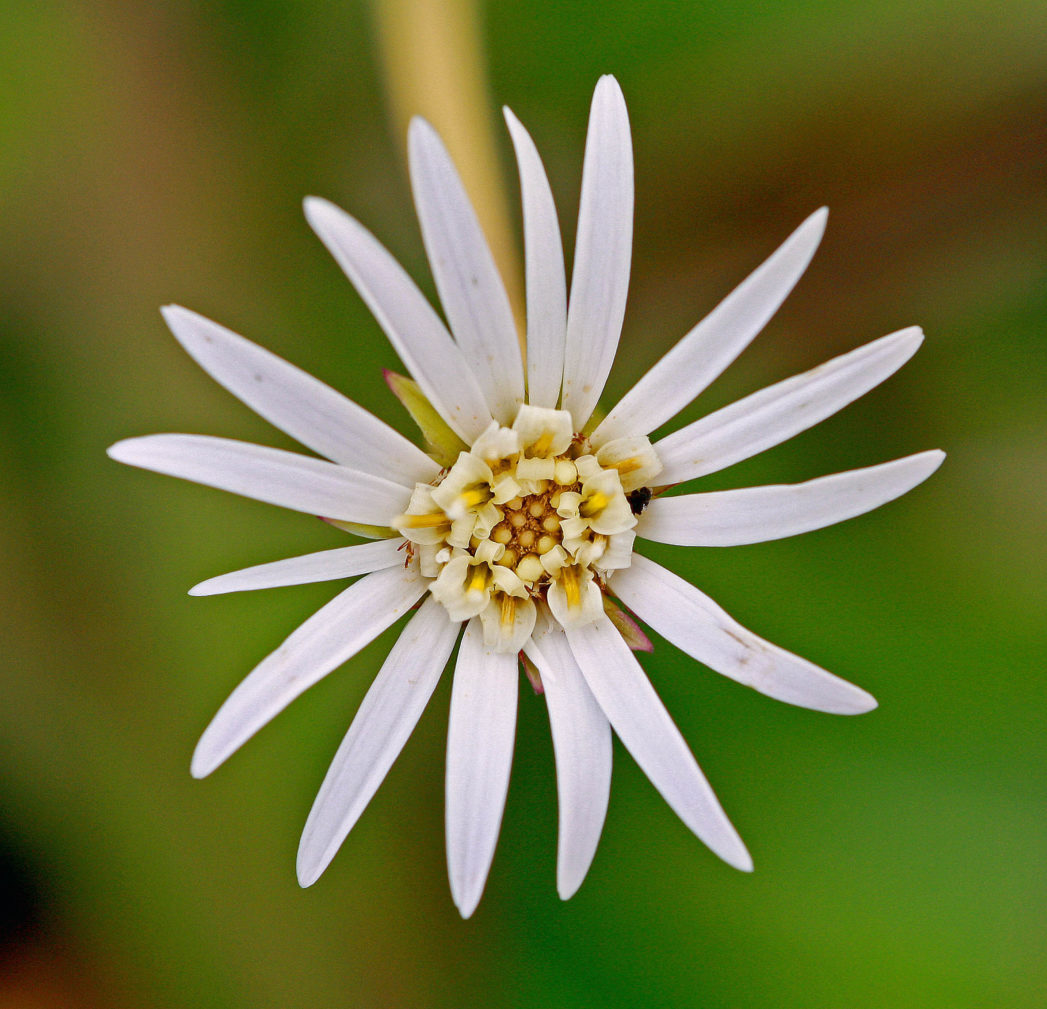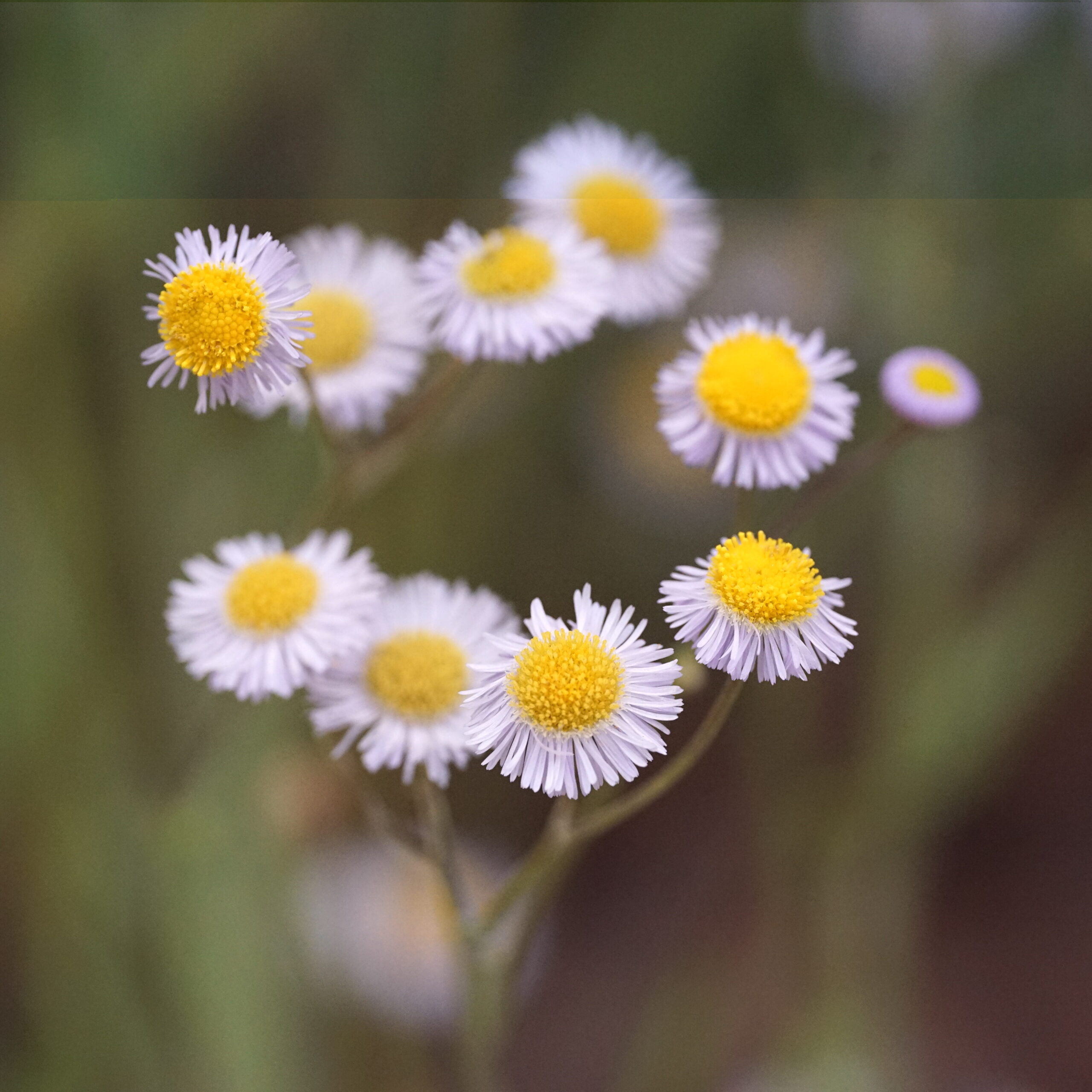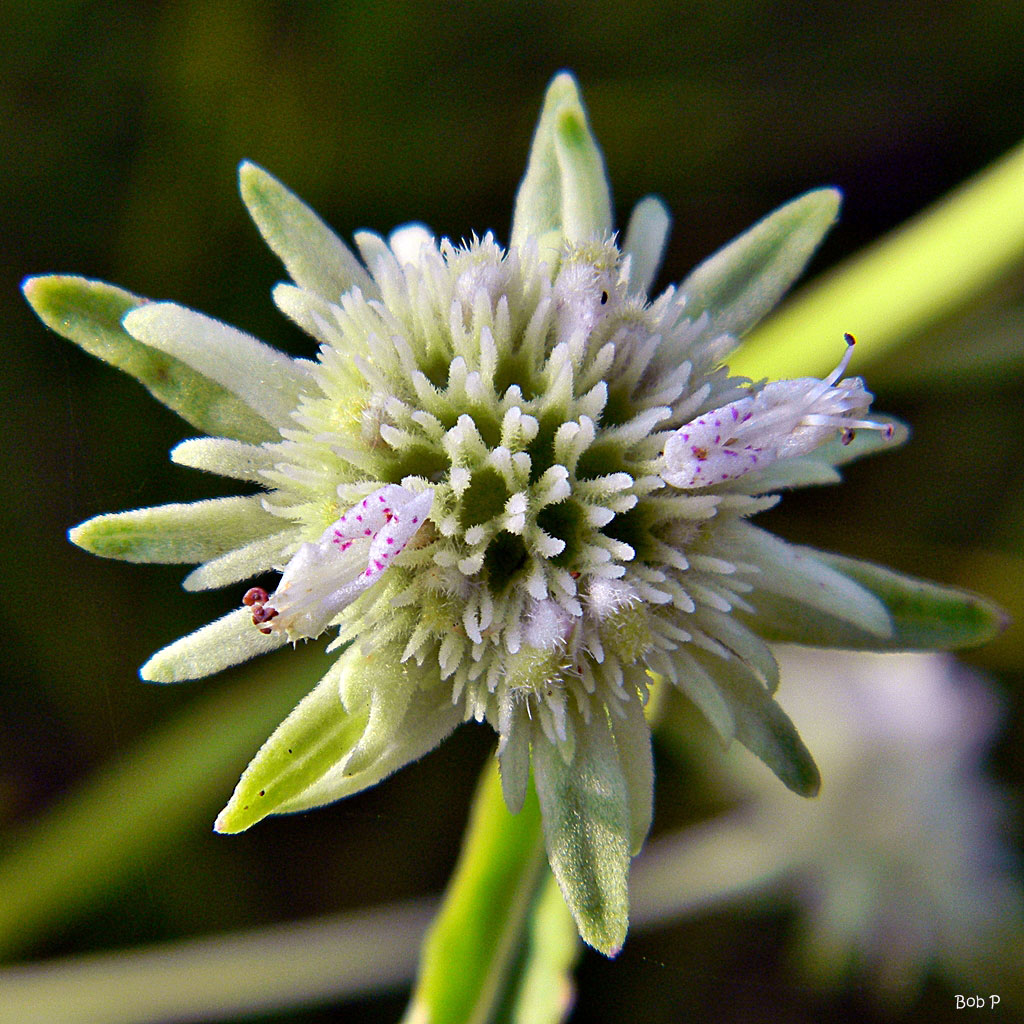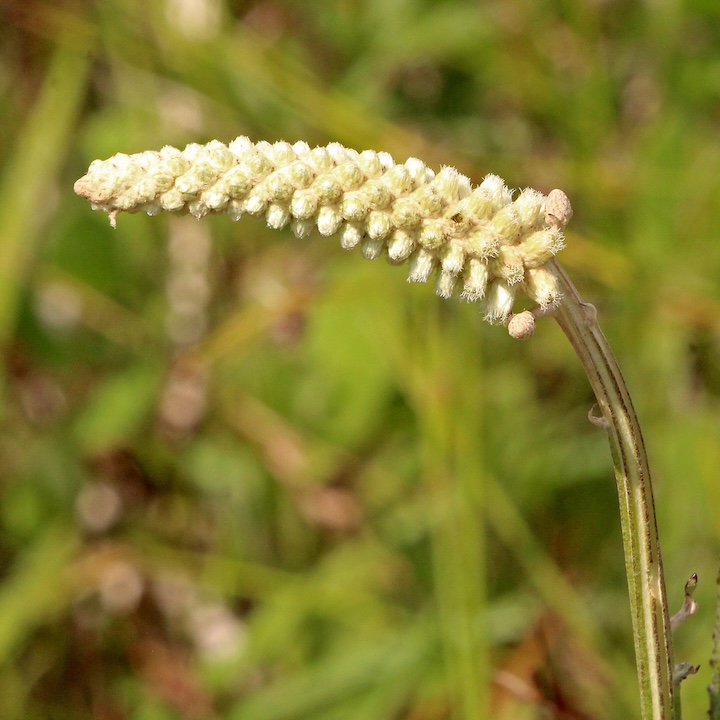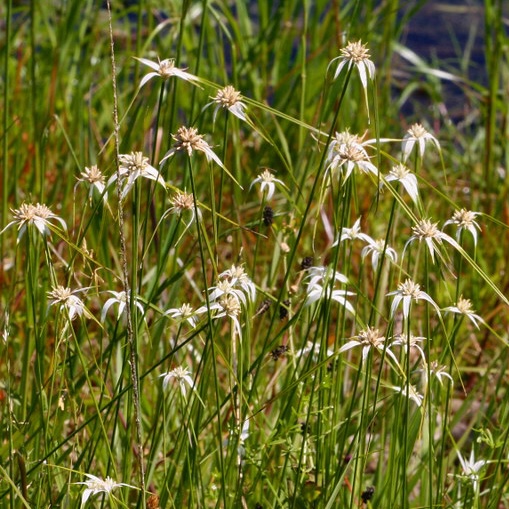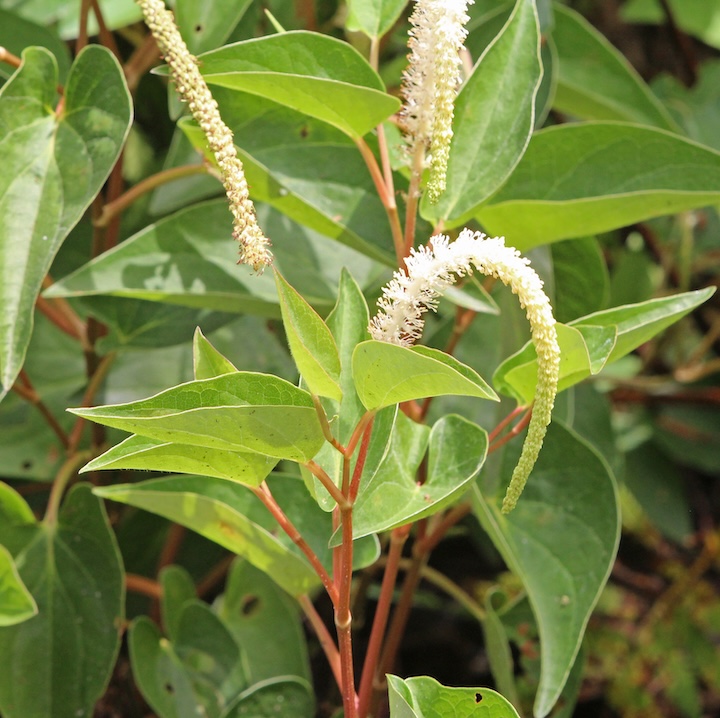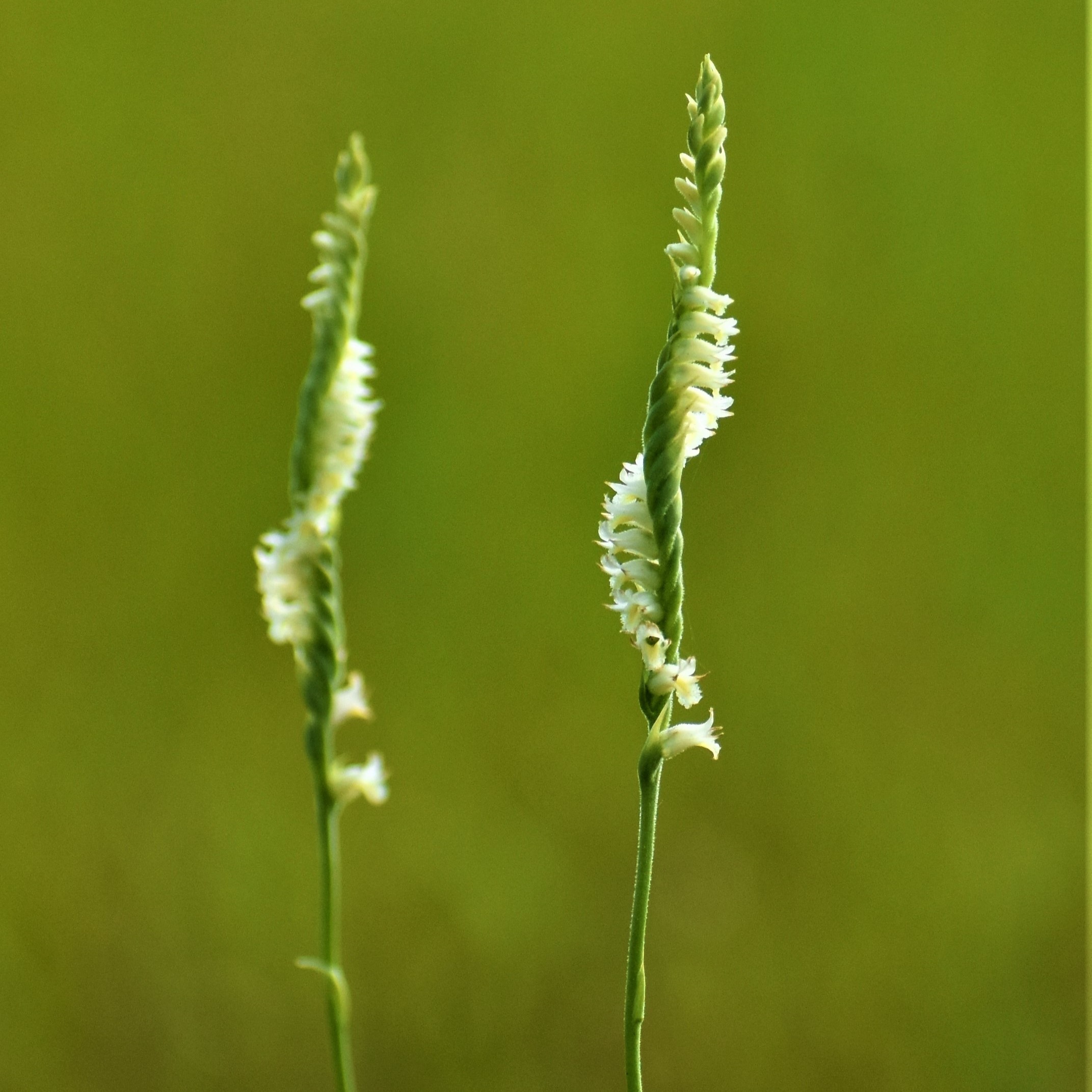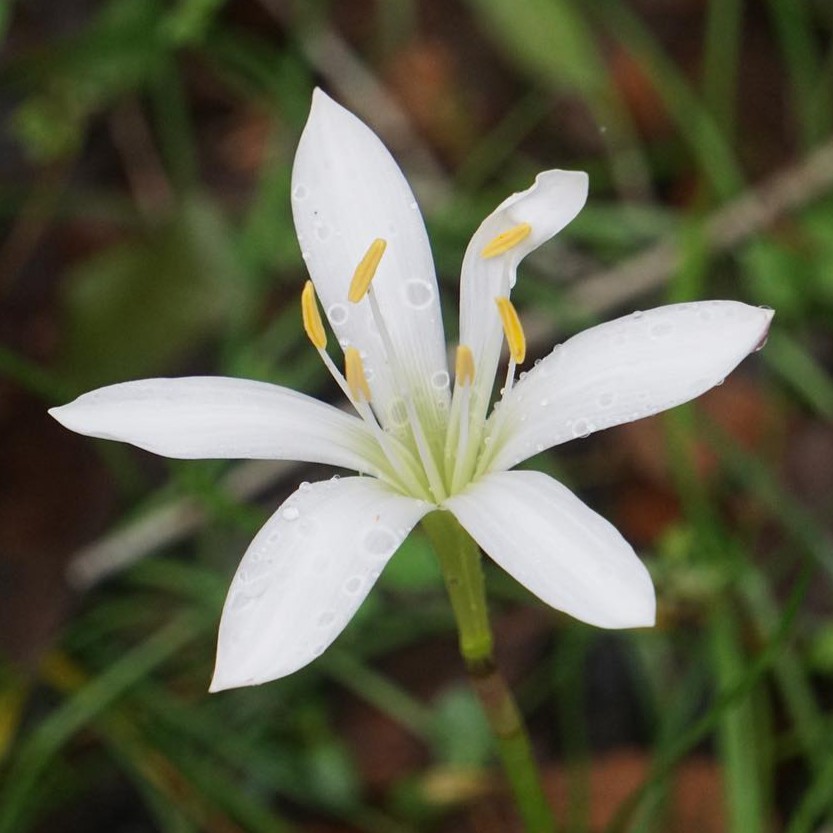Bloom Report: White wildflowers, full of color
by Jeff Norcini
Pictured above: Roadside Rainlilies (Zephyranthes atamasca) by Stacey Matrazzo
Many of Florida’s native flowers are white — but white isn’t just a color. It’s actually a fusion of all the colors of the visible light spectrum. When white light passes through a prism, it reveals a rainbow of colors from deep violet to rich red. Raindrops are like tiny prisms, bending sunlight into those brilliant rainbows we see after storms — a reminder that even the purest white carries the warmth of all the colors it contains.
Below are some of Florida’s most common native white wildflowers. Many thrive along roadsides and can be found throughout the state, with a few regional exceptions. Because these species span such a wide range, their peak blooming seasons shift from south to north. For example, Whitetop sedge (Rhynchspora colorata) blooms in late winter to early spring in South Florida, but doesn’t reach peak bloom in the Panhandle until mid to late spring. Keep that in mind when using textbooks or online guides to determine flowering times — what’s blooming in one part of the state may be weeks away in another.
Pineland daisy (Chaptalia tomentosa)
- Occurs throughout Florida in moist habitats.
- Blooms late winter through spring.
- Perennial
- Flowers may have pink tinge.
- Also known as Woolly sunbonnet, referring to the initial droop of the flowerhead, which resembles a bonnet.
- See also:
Oakleaf fleabane (Erigeron quercifolius)
- Occurs throughout Florida in a variety of dry to moist habitats and along roadsides.
- Blooms spring through early summer.
- Short-lived perennial
- Flowers may have pink to purplish tinge.
- See also:
Clustered bushmint (Hyptis alata)
- Occurs throughout Florida in moist areas and roadside ditches.
- Blooms spring through summer.
- Perennial or short-lived perennial
- See also:
Blackroot (Pterocaulon pycnostachyum)
- Occurs throughout Florida in moist pinelands.
- Blooms spring through summer, occasionally into fall.
- Flowers may have pink or pale greenish tinge.
- See also:
Starrush whitetop (Rhynchospora colorata)
- Occurs throughout Florida (may be less frequent in Panhandle) in moist areas and along roadsides.
- Blooms from late winter/spring through summer.
- Perennial
- Its striking white bracts are often mistaken for flowers.
- See also:
Lizard’s tail (Saururus cernuus)
- Occurs throughout Florida in wet areas with shallow water.
- Blooms late winter through early summer.
- Long-lived perennial
- Typically forms a colony.
- See also:
Ladiestresses (Spiranthes spp.)
- Terrestrial orchid occurring throughout Florida
- Occurs in dry to wet areas, depending on species.
- Most species bloom in spring.
- Perennial
- The genus Spiranthes comes from the Greek speira, or “coil” and anthos, or “flower.” It refers to the spiral arrangement of the inflorescence.
- See also:
- Most commonly occurring rain lilies are Zephyr atamasco. Some sources recognize two distinct varieties: Z. atamasca var. atamasca, occurring in the Panhandle and North Florida, and Z. atamasca var. treatiae, occurring in North and Central Florida.
- Blooms late winter into early summer, with most abundant flowering in spring.
- Short-lived perennial
- Flowers may have pink tinge.
- See also:
As you explore Florida’s springtime beauty, remember this: Wildflowers are best left where they grow. Many of our native wildflowers rely solely on their seeds to reproduce, so picking flowers reduces their ability to sustain future generations. Instead of picking wildflowers, take a picture — it will last longer! If you’d like to bring wildflowers into your own space, consider planting some in your yard or in containers on your patio or porch.
Native wildflower seed packets are available from the Florida Wildflower Seed and Plant Growers Association. Click here to check availability and place an order. You can also find native wildflower plants (and sometimes seeds) at nurseries or garden centers that specialize in native species. Visit the Florida Association of Native Nurseries’ website to find a native garden center near you.
